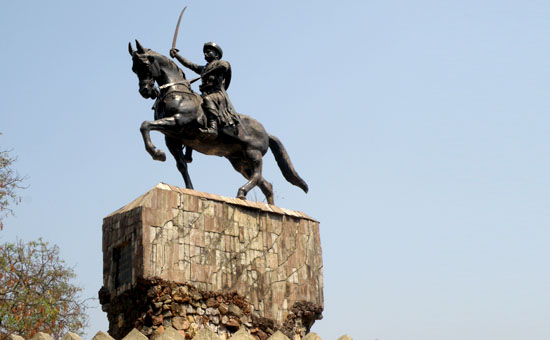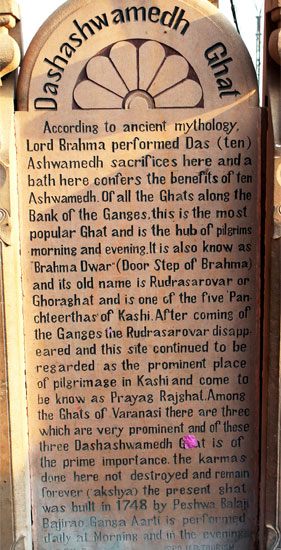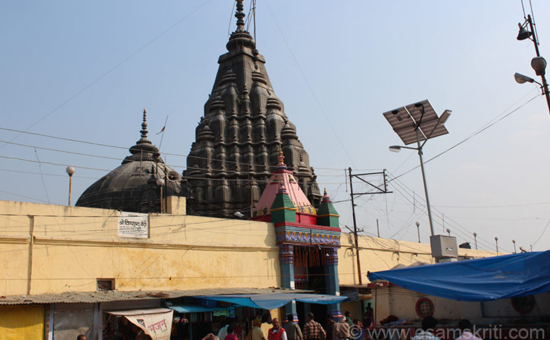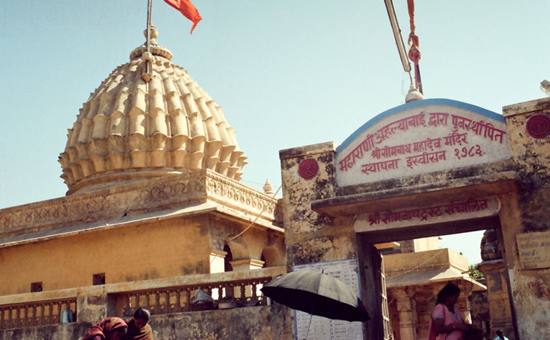- The Marathas were a liberating force and
remained the paramount power all through the eighteenth century. During the
entire period, the ideals of religious, socio-cultural and economic parity were
pursued in all the areas that they controlled.
Many historians have discussed what is often called ‘The Eighteenth-Century Debate’ in relation to India. The colonial legacy was to stretch the Mughal period well into the eighteenth century, and then present the onset of the British era as beginning with Plassey in 1757, or from 1765, when the Diwani of Bengal was handed over the East India Company. The interpretation has been with us since the nineteenth century when every official worth his salt who worked in the British establishment became a historian of sorts, gathered documents and wrote tomes on India – from the British point of view.
If there was one enemy the British had to fight several wars to suppress, right from Aligarh in the north to the Carnatic in the south, it was the Marathas. Once the Nizam came under British protection in 1798 and Tipu was killed in 1799, the Maratha power – quite lost in its own contradictions at the very top of their Government – was ‘encircled’. However, it was this Maratha power that came very close to dislodging the British edifice as Wellington found in the close shave he had at Assaye, or as Lord Lake discovered in the keenly contested battles with some very modern weaponry that the Scindia army possessed in the four battles fought in the north in 1803. The Peshwa fought another battle from November 1817 for eight months along with Bhonsle of Nagpur, and this became the third Anglo-Maratha war. In this manner, the British took over in India from the Marathas.
The reasons for a skewed interpretation
of history are understood quite simply. Historians have differing perspectives, often dictated by politics of
the day. There is a need at different times to manipulate the narrative.
Thirdly, there are red herrings thrown in the path of historians to throw them
off the scent. To this day, one finds ideology and slant dictating the
narration of history, which ought to be based on primary sources and the
unbiased narration that arises from such sources.
The sources themselves have to be placed in
perspective. Court historians, British officials who downplayed the
achievements of those that they colonized, and unfortunately even the post-1947
history project that was heavily influenced to seal national and social fissures
based on faith and region.
From the twelfth century a stream of invasions into India brought kings who were zealous of their own culture and imposed it on the ‘indigenous’ Indian population that existed at the time. The question that one therefore, is asked is – what exactly is indigenous? It is not as difficult to answer this at a time when a ‘nation state’ is the fundamental unit of the world today, and it is the well-being of this nation that determines the well-being of its citizens. History is not static, it is everchanging as the perception of its observer changes. In the seventy fifth anniversary year of Indian independence, we are a mature nation who have fought our fissures and emerged confident of our nationhood. It is time to discard the red herrings and see our history as it really was.
The oft repeated story of India
being a nation of migrants has been flogged to the bone. The entire world is full of migrants that
emerged from the African continent. India had its share of migrants in the form
of invasions. By the eleventh or twelfth centuries, there was some clarity of
India and its identity. The invaders who came until then were assimilated in
the Indian fold. They added to the social milieu, yet discord was a small part
of it Then, a new set of invaders arrived who came and ruled here. Until the
very end they continued to use the language and the customs of the region they
hailed from.
The Slave dynasty, the Mughal or Bahmani
kingdoms had a well-defined pecking order, so well brought out by Athar Ali in
his exposition on the skewed distribution of mansabs as per ancestry. Here,
there was a premium on Turkic ancestry, enabling faster promotions. The second
layer was of those Indians who embraced the faith of the rulers, while the
third belonged to the natives who did not belong to either of these. This was
the state of affairs when Shivaji raja began his quest for swarajya. The oppression of his people was on socio-cultural,
religious and economic fronts. The economic oppression was, for example, in the form of higher octroi duties for Hindu traders compared to Muslim or even Europeans as seen from Aurangzeb’s order promulgated in 1667 at Ahmedabad.
The concept of a free nation was enunciated in mid seventeenth century, when Chhatrapati Shivaji said that he fought for swarajya – self-rule. The definition of this self-rule by itself reveals the thought process of the founder king of the Maratha state. It was freedom from oppression. Swarajya was further defined as a Hindavi swarajya, not foreign rule – perceived as yavanas – a word derived from ‘Ionian’ – a region in present day Turkey and hence Turkic.
The common phrase when confronted by injustice in Maharashtra to this day is, ‘is this Mughal rule?’ It was Shivaji raja who had a clear perception of what he had to do. Freedom had to be political firstly, but also cultural. So even as he created a Maratha state, he also adopted a Sanskrit seal for himself – as against the Persian seals prevalent until then. He also began a process of weeding out Persian words from Marathi. The Rajya vyavahar kosh was meant to substitute such words in
governance. The names of his ministers were also based on Sanskrit words.
The word swarajya was used only twice in
Indian history. The first was when Shivaji raja sought freedom from the Mughals
and the Adilshahi, the second was when Tilak fought against the British. The
word swarajya was in fact used as a direct juxtaposition to the par
rajya that we had until then.
After 1680, when Chhatrapati Shivaji died, Aurangzeb descended on the Deccan. A long twenty-seven-year war ravaged the Deccan. Thousands were killed in battle, while the famine due to war killed several thousands more. It was Aurangzeb’s death in 1707 that saw the Mughals retreat to the north and the rise of the Maratha power across the Narmada.
 Statue of Chimaji Appa in Vasai Fort.
Statue of Chimaji Appa in Vasai Fort.
Looking at the political history of the eighteenth century, one gets an idea of what the period represents. A mere dozen years after Aurangzeb’s death, thirty thousand Maratha troops were in Delhi and helped the rebel Sayyid Husain Ali depose the Mughal Emperor Farrukh Siyar. The Mughal court could no longer command the power and prestige of the past. The Nizam ul mulk was vanquished in 1728, and again in 1738, at the hands of Baji rao on the battlefield, and the Peshwa himself reached Delhi in 1737 – the first time Delhi saw an enemy at its doors in a hundred and eighty years. In 1729, Chimaji Appa defeated and killed the Mughal Governor of Malwa on the battlefield and the very next year Baji rao entered Bundelkhand to help Chhatra Sal, defeating the Mughal commander Muhammad Khan Bangash. The Marathas were called to Delhi to help the Mughals face Ahmed Shah Abdali and in 1752, they signed a treaty by which they undertook to protect the Mughal throne in exchange for revenue from a number of Mughal subahs.
In 1757, Ahmed Shah Abdali looted Delhi and massacred pilgrims at Mathura. On his departure, the Maratha army under Raghunath rao and Holkar took Delhi and entered the Punjab. In 1758 and 1759, Lahore, Attock, Multan and Peshawar were under Maratha control. This was indeed the zenith of Nanasaheb Peshwa’s rule, and Pune was the de facto capital of India. This was also the time when the English took advantage of Maratha preoccupation with Abdali and Delhi to win the battle at Plassey and take control of Bengal.
The battle of Panipat of 1761, fought in a territory where the Marathas had no allies, resulted in a huge loss for them. However, within months many of the lost places in the doab were taken and Madho Singh of Jaipur, who entered the Maratha province of Malwa, was defeated at Mangrol. It would have been easier to tackle the setback had Raghunath rao’s ambition to be the next Peshwa not hindered affairs at home for a couple of years. By 1763, Madhav rao Peshwa had reclaimed control of affairs, and through that decade he successively brought the Nizam and Hyder Ali under his control until Maratha forces under Trimbak rao Pethe inflicted a severe defeat on Hyder and Tipu at Moti Talao. Similarly in the north, an army that was dispatched in 1768, wound its way until Delhi was captured in February 1771 by Mahadji Scindia, Ramachandra Ganesh and Visaji Krishna Biniwale. By January 1772, Shah Alam II, the Mughal king who was in exile at Prayag, had been brought back and placed on the throne. The same year, the fort of Pathargarh was taken. The booty captured from the Maratha camp at Panipat along with some Maratha prisoners, were released.
 Dashashwamedh Ghat was made in 1748 by Peshwa Balaji Bajirao.
Dashashwamedh Ghat was made in 1748 by Peshwa Balaji Bajirao.
The period after 1772 can be properly called
the post-Peshwai period and it was Mahadji Scindia, Tukoji Holkar and Nana Phadnis
along with the Patwardhans and Hari pant Phadke who persevered and retained
Maratha hold on the north and the south. Save a small blip in the north when
Ghulam Qadir took control of the Red Fort and blinded the Mughal king, the
Marathas remained as the ruling power from the towns of Aligarh to Sirhind
north of Delhi, to the Tungabhadra in the south. Delhi itself was under Mahadji
and later, under Daulat rao Scindia, until 1803.
In 1803, Delhi was taken by Lord Lake’s army largely through defections by French officers in Maratha employ, and progressively, divisions among their own chiefs led to the complete loss of power to the British in 1818. This traditionally is
the year from which rule by the East India Company began over most of India.
 Vishnupad Temple Gaya, Bihar made in 1787 by Ahilyabai Holkar.
Vishnupad Temple Gaya, Bihar made in 1787 by Ahilyabai Holkar.
The Marathas were a liberating force and
remained the paramount power all through the eighteenth century. During the
entire period, the ideals of religious, socio-cultural and economic parity were
pursued in all the areas that they controlled. This was not all. Freedom from
religious persecution for all communities was implemented. From 1650s to 1818, one sees a nation-wide enterprise of
rebuilding old temples destroyed in previous centuries and the reclaiming of religious
freedom. From Chhatrapati Shivaji to Baji rao, Nanasaheb, Madhav rao and
Ahilyadevi Holkar - each and every ruler contributed to this renewal. The ghats
and temples of Kashi or Maheshwar are living testimony to this giant
enterprise.
 A temple was made at Somnath in 1783 by Ahilyabai Holkar.
A temple was made at Somnath in 1783 by Ahilyabai Holkar.
The long period of foreign rule until the
Maratha period, and the British raj thereafter, places the Maratha Empire in a
unique position in Indian history. Not only were they the first indigenous
power after centuries of Turkic rule they were also the last indigenous Empire
before we succumbed to a hundred and thirty years of British rule.
As for the effects of Maratha presence in the north as seen today, one can see that had the Marathas not controlled those key areas north of the Chambal, it is difficult to see today’s frontier at the river Sutlej. The past gave way to the present, and in more ways than one can imagine, the Maratha interregnum of a century and a half, influenced the India of today.
To read all articles by author. Vasai pic by author, Other article pictures by sanjeev nayyar.
Also
read
1.
Battle
of Assaye
2.
Maratha
Supremacy in the 18th century
3.
Chhatrapati Shivaji Maharaj Part 3 – The king who care for his people
4.
The Saga of Shivaji – From Agra to Salher
5.
Maharaj Yeshwantrao Holkar – I, the Forgotten Hero
6.
Patwardhans – The Sword Arms of the Peshwas
7.
Bajirao Peshwa – The Empire Builder
8.
The Story of Thanjavur’s Maratha Kings
9.
How
the Marathas captured Attock in modern day Pakistan
10.
Why
Ahilyabai Holkar was a Great Women